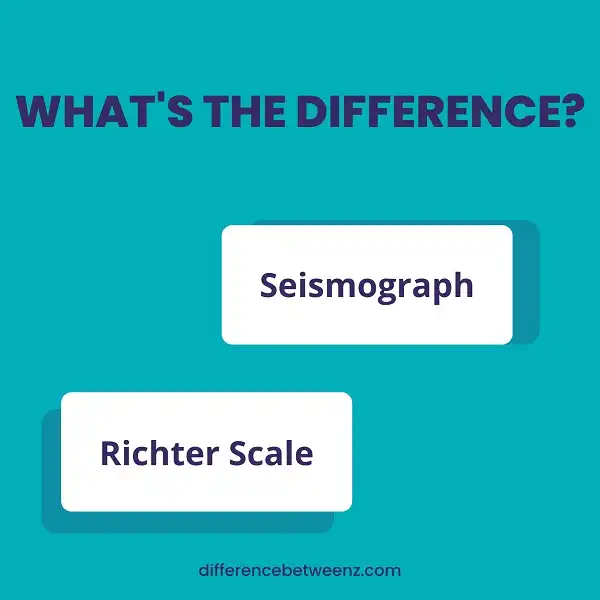Seismograph vs. Richter scale
What is the Difference between Seismograph and Richter scale:-Approximately 1.3 million earthquakes occur each year, without taking into consideration those of the human beings we are aware of being very low intensity.
Most of these earthquakes occur in remote areas, far from people and there are many reasons why they occur; from meteorites, volcanic eruptions, man-made events, underground nuclear tests, or what is most often the case, the displacement of Earth’s tectonic plates.
However, more than the cause of earthquakes, what is important is to know the magnitude or intensity of the earthquakes, the damage they can cause, and how to act when they occur.
To achieve these purposes there are two very useful instruments: the seismograph and the Richter scale. Here we explain how they differ.
Difference between Seismograph and Richter scale
Seismograph
The seismograph is an instrument that measures the movements of the earth,
Such as seismic waves generated by earthquakes, volcanic eruptions, and other sources.
Seismic wave records help seismologists map the interior of the earth, locate and measure the different sources of earthquakes.
Who invented the seismograph and when?
The first seismograph was designed by Zhang Heng of the Han Dynasty China in AD 132.
It was called “Houfeng Didong Yi,” which literally means “an instrument for measuring seasonal winds and earth movements.”
Zhang Heng’s original plans for the seismometer (as it is also called the seismograph) were lost over time.
However, historians and scientists were able to retrieve enough information to be able to create a model.
Who created seismology?
After 1880, seismometers were descended from ones developed by John Milne’s team.
James Alfred Ewing, and Thomas Gray, who worked in Japan from 1880 to 1895.
After World War II, these seismometers were adapted again.
This instrument has a weight hanging from a spring, so it is sensitive to the movements of the earth.
Changes in movement recorded by this device can help indicate the likelihood of an earthquake.
however, this creates another problem How to properly describe the intensity of the earthquake once it occurs?
Richter scale
This scale is the one used to measure the intensity of earthquakes.
What is a 10 on the Richter scale?
Thus depending on how intense these are assigned a number ranging from 1 to 10, where 1 is very low intensity and 10 is very high.
It was developed by Charles Francis Richter in collaboration with Beno Gutenberg in 1935.
Originally it was to be used only in a study area located in California.
However, eventually, the scale was converted into an accepted norm worldwide.
The Richter scale assigns a number based on how much energy is released during the earthquake.
Does the Richter scale go from 1 to 10?
E is a base 10 logarithmic scale, which means that an earthquake measuring 5.0 on the Richter scale has an intensity 10 times greater than one that measures 4.0.
Although it goes from 1 to 10, the reality is that this scale has no lower limit.
Many modern seismographs are quite sensitive and record earthquakes with incredibly low magnitudes
Key differences between seismograph and Richter scale
- The seismograph is an instrument that measures the movement of the earth,
- The Richter scale was developed to assign a numerical value or quantify the energy released during an earthquake (intensity).
- The Richter scale was developed in 1935 Quiet Later
- The Seismograph was developed in 132 AD pretty earlier.


